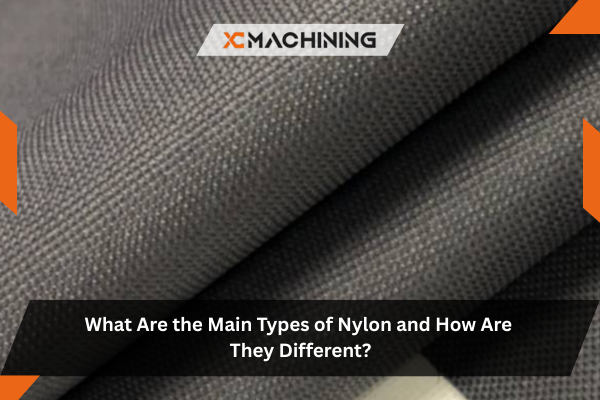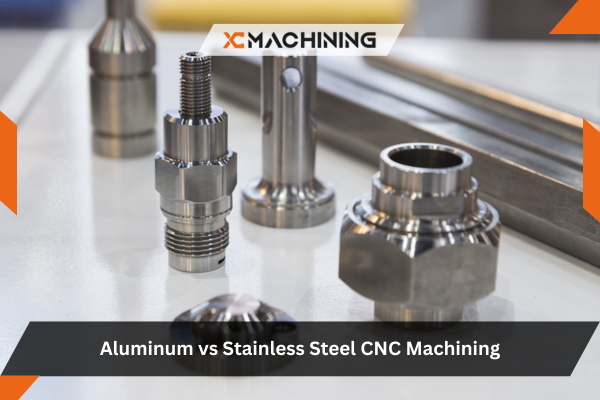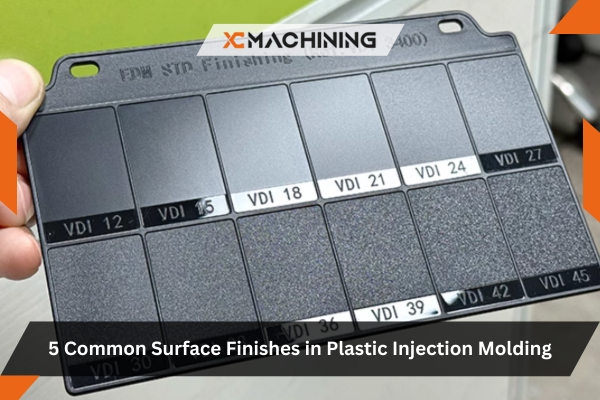When Wallace Carothers and his team at DuPont synthesized the first nylon polymer in 1935, they revolutionized the textile and materials industries. This breakthrough created an entirely new category of synthetic materials that would eventually permeate nearly every aspect of modern life. Today, nylon represents one of the most versatile and widely used engineering thermoplastics, yet many people don’t realize that “nylon” encompasses numerous distinct polymer types, each with unique properties tailored to specific applications. Understanding the main types of nylon and their differences helps manufacturers, engineers, and designers select the optimal nylon material for their particular needs.
Table des matières
What Is Nylon? Understanding the Basics
Before exploring specific types of nylon, it’s essential to understand what nylon material actually is. Nylon is the generic name for a family of synthetic polymers known chemically as polyamides. These polymers consist of repeating units linked by amide bonds (-CO-NH-), created through condensation reactions between diamines and dicarboxylic acids, or through ring-opening polymerization of lactams.
The term “nylon” followed by numbers (like Nylon 6, Nylon 66) indicates the polymer’s chemical structure. These numbers represent the count of carbon atoms in the monomers used to create the polymer. For example, Nylon 66 forms from two monomers hexamethy lenediamine (6 carbons) and adipic acid (6 carbons) while Nylon 6 polymerizes from a single monomer, caprolactam (6 carbons).
General Characteristics of Nylon Materials
Tous types de nylon share certain fundamental properties that make them valuable across diverse applications:
High strength and toughness: Nylon exhibits excellent tensile strength, often exceeding 70 MPa for engineering grades, combined with good impact resistance that maintains performance even at low temperatures.
Excellent abrasion resistance: Nylon’s resistance to wear makes it ideal for applications involving friction, sliding contact, or repeated mechanical stress.
Good chemical resistance: Most nylons resist oils, fuels, weak acids, alkalis, and organic solvents, though they are susceptible to strong acids and oxidizing agents.
Self-lubricating properties: The material’s inherent lubricity reduces friction in moving parts, often eliminating the need for external lubrication in bearings and gears.
Temperature performance: Continuous use temperatures typically range from 80-150°C depending on the specific nylon type, with higher grades tolerating brief exposure to higher temperatures.
Moisture sensitivity: A notable characteristic is nylon’s tendency to absorb moisture from the environment, which affects dimensional stability and mechanical properties an important consideration in precision applications.

The Main Types of Nylon: A Comprehensive Overview
Nylon 6 (PA6)
Nylon 6, also called Polycaprolactam or PA6, ranks among the most commonly produced nylon materials globally. Manufactured through ring-opening polymerization of caprolactam, this polymer offers an excellent balance of properties and cost-effectiveness.
Key Properties of Nylon 6:
- Tensile strength: 50-90 MPa (depending on reinforcement)
- Melting temperature: Approximately 220°C
- Moisture absorption: 2.5-3.5% at equilibrium
- Good impact strength and toughness
- Excellent abrasion resistance
- Easily processed through injection molding and extrusion
Nylon 6 demonstrates slightly better impact resistance and processability compared to Nylon 66, though with somewhat lower mechanical strength and heat resistance. The material’s crystalline structure allows for post-processing modifications through annealing, which improves dimensional stability and mechanical properties.
What is nylon 6 used for?
- Automotive components (engine covers, air intake manifolds, fuel system parts)
- Industrial gears, bearings, and wear parts
- Textile fibers for carpets, clothing, and industrial fabrics
- Film and packaging applications
- Electrical components and connectors
- Sports equipment and consumer goods
Nylon 66 (PA66)
Nylon 66, chemically known as polyhexamethylene adipamide, was the original nylon developed by DuPont. Created from hexamethylenediamine and adipic acid, this polymer offers superior mechanical properties and heat resistance compared to Nylon 6.
Distinctive Characteristics:
- Tensile strength: 60-95 MPa
- Melting temperature: Approximately 260°C
- Higher stiffness and hardness than Nylon 6
- Better heat resistance and dimensional stability at elevated temperatures
- Excellent fatigue resistance
- Lower moisture absorption than Nylon 6
The higher melting point of Nylon 66 makes it preferable for applications experiencing sustained elevated temperatures or requiring hot-water resistance. Its superior mechanical properties at high temperatures explain its dominance in automotive under-hood applications.
Primary Applications:
- Automotive engine components requiring heat resistance
- Power tool housings and gears
- Electrical connectors and circuit breakers
- Industrial fasteners and mechanical components
- Conveyor belts and drive belts
- Tire cord reinforcement
Nylon 11 (PA11)
Nylon 11, produced from 11-aminoundecanoic acid derived from castor oil, offers unique properties that distinguish it from other types of nylon. This biobased polymer exhibits lower moisture absorption and better dimensional stability than Nylon 6 or 66.
Distinguishing Features:
- Lowest moisture absorption among common nylons (0.9% at equilibrium)
- Excellent dimensional stability
- Superior low-temperature impact resistance
- Good chemical resistance, particularly to hydrocarbons
- More flexible than Nylon 6/66
- Lower density (1.04 g/cm³)
Nylon 11’s combination of low moisture absorption, flexibility, and chemical resistance makes it ideal for specific applications where these characteristics matter most. Its partially bio-based origin also appeals to industries pursuing sustainable material solutions.
Typical Uses:
- Fuel and brake lines in automotive applications
- Flexible tubing and pneumatic hoses
- Cable jacketing for harsh environments
- Powder coating for metal protection
- Medical tubing and catheters
- Athletic footwear components
Nylon 12 (PA12)
Similar to Nylon 11 but produced from petroleum-based feedstocks, Nylon 12 shares many characteristics with its biobased cousin while offering slightly different property trade-offs.
Key Attributes:
- Very low moisture absorption (0.5-1.0%)
- Excellent dimensional stability
- Good chemical resistance
- High impact strength, especially at low temperatures
- Lower melting point (~178°C) than Nylon 6/66
- Outstanding stress crack resistance
The combination of minimal moisture absorption and excellent chemical resistance makes Nylon 12 particularly valuable in applications involving exposure to fuels, oils, and aggressive chemicals where dimensional precision matters.
Applications Include:
- Automotive fuel systems and hydraulic lines
- Industrial tubing and fittings
- Cable ties and wire management
- Sports equipment components
- 3D printing filament (SLS process)
- Composants de dispositifs médicaux
Nylon 46 (PA46)
Nylon 46 represents a high-performance specialty polymer offering superior heat resistance and mechanical properties compared to commodity nylons. Its chemical structure—based on 1,4-diaminobutane and adipic acid—creates a highly crystalline polymer with exceptional properties.
Performance Characteristics:
- Extremely high melting point (295°C)
- Outstanding mechanical strength at elevated temperatures
- Excellent stiffness and creep resistance
- Superior fatigue resistance
- Higher cost than commodity nylons
This specialized matériau en nylon serves applications where extreme temperature performance justifies the premium price. Its ability to maintain mechanical properties at temperatures exceeding 150°C continuously makes it invaluable for the most demanding applications.
Demanding Applications:
- Automotive under-hood components (cooling system parts, air intake components)
- High-temperature electrical connectors and switches
- Bearings and gears in high-temperature environments
- Power tool components experiencing high heat generation
- Industrial equipment requiring sustained high-temperature operation
Nylon 610 and Nylon 612
These specialty types of nylon offer intermediate properties between Nylon 6/66 and the long-chain nylons (11, 12). Created from hexamethylenediamine combined with sebacic acid (610) or dodecanedioic acid (612), these polymers provide unique property combinations.
Property Profile:
- Lower moisture absorption than Nylon 6/66 (1.5-2.0%)
- Better dimensional stability in humid environments
- Good chemical resistance
- Improved low-temperature impact properties
- Higher cost than commodity grades
These materials serve niche applications where their specific balance of moisture resistance, mechanical properties, and chemical resistance provides optimal performance.
Application Areas:
- Precision mechanical components requiring dimensional stability
- Electrical components in humid environments
- Specialty tubing and hoses
- Sporting goods and outdoor equipment
- Composants de dispositifs médicaux
Glass-Filled and Reinforced Nylon Materials
Beyond the base polymer types, nylon materials frequently incorporate reinforcements that dramatically alter their properties. Glass fiber reinforcement represents the most common modification, typically added at 15-50% by weight.
Effects of Glass Fiber Reinforcement:
- Increased stiffness: Flexural modulus can double or triple compared to unreinforced grades
- Plus grande résistance: Tensile strength improves by 50-100%
- Better heat resistance: Glass fibers raise the heat deflection temperature significantly
- Reduced moisture absorption: Lower surface area reduces water uptake
- Improved dimensional stability: Minimizes warping and shrinkage
- Reduced impact strength: Trade-off for increased stiffness
- Increased abrasiveness: Causes faster mold and equipment wear
Glass-filled nylon finds extensive use in structural automotive components, power tool housings, electrical enclosures requiring rigidity, and industrial machinery parts where stiffness and heat resistance are critical.
Other reinforcement options include carbon fiber (for maximum stiffness and strength with lighter weight), mineral fillers (for cost-effective stiffness improvement), aramid fibers (for impact resistance with reinforcement), and glass beads (for dimensional stability with minimal strength impact).
Specialty and Modified Nylon Types
The types of nylon extend beyond the numbered polyamides to include specialty modifications tailored for specific performance requirements:
Impact-Modified Nylons: Incorporate rubber or elastomer phases to dramatically improve impact resistance, particularly at low temperatures. These materials suit applications experiencing shock loads or operating in cold environments.
Heat-Stabilized Nylons: Contain additives that slow oxidative degradation at elevated temperatures, extending service life in high-heat applications.
UV-Stabilized Nylons: Include light stabilizers and UV absorbers for outdoor applications where sunlight exposure would otherwise cause rapid degradation.
Flame-Retardant Nylons: Incorporate halogenated or halogen-free flame retardants for electrical and transportation applications with fire safety requirements.
Conductive Nylons: Feature carbon black, carbon nanotubes, or metallic fillers providing electrical conductivity or static dissipation for electronics manufacturing and ESD-sensitive environments.
Transparent Nylons: Amorphous or semi-crystalline grades offering optical clarity for applications requiring visibility of internal components or aesthetic appearance.

Material Selection: Choosing Among Types of Nylon
Selecting the appropriate nylon material requires evaluating multiple factors specific to your application:
Environmental conditions: Temperature range, humidity exposure, chemical contact, and UV exposure influence which nylon types perform optimally.
Mechanical requirements: Load characteristics, impact resistance needs, and stiffness requirements narrow material choices. Glass reinforcement often becomes necessary for high-stress applications.
Dimensional precision: Applications requiring tight tolerances in varying humidity favor low-moisture-absorption types like Nylon 11, 12, or glass-filled grades.
Processing considerations: Injection molding, extrusion, blow molding, or 3D printing capabilities vary among nylon types. Processing temperatures, cycle times, and drying requirements differ significantly.
Conformité réglementaire: Food contact, medical device, or automotive specifications may mandate specific nylon grades with appropriate certifications.
Cost constraints: While Nylon 6 offers the most economical option, specialty types justify their premium pricing when their unique properties prove essential.
Performance longevity: Consider how moisture absorption, thermal aging, and UV exposure will affect properties over the product’s intended service life.
What Is Nylon Used For? Applications Across Industries
The versatility of different types of nylon enables applications spanning virtually every industry:
Automobile: Engine components, fuel systems, electrical connectors, interior trim, under-hood parts, structural brackets, and transmission components leverage nylon’s strength, heat resistance, and chemical compatibility.
Industriel: Gears, bearings, rollers, conveyor components, machine guards, and pneumatic fittings benefit from nylon’s wear resistance and self-lubricating properties.
Électronique: Connectors, switches, cable ties, wire management, and device housings utilize nylon’s electrical properties, flame resistance, and dimensional stability.
Biens de consommation: Toothbrush bristles, kitchen utensils, sporting equipment, luggage components, and fasteners take advantage of nylon’s durability and versatility.
Textiles: Clothing fabrics, carpeting, rope, fishing line, and parachute material exploit nylon’s fiber-forming capabilities and mechanical properties.
Médical: Surgical instruments, catheters, drug delivery components, and sterilizable device housings rely on biocompatible nylon grades that withstand repeated sterilization.
Aérospatiale: Lightweight structural components, cable management, and interior fittings use high-performance nylon types meeting stringent flame and smoke requirements.
Processing and Manufacturing Considerations
Different types of nylon require specific processing approaches for optimal results:
Drying requirements: All nylons must be thoroughly dried before processing (typically 3-4 hours at 80°C) due to moisture sensitivity. Inadequate drying causes degradation, surface defects, and reduced mechanical properties.
Processing temperatures: Range from 230-280°C for Nylon 6 up to 310-330°C for Nylon 46, requiring appropriate equipment thermal capabilities.
Mold temperatures: Proper mold temperature control (70-120°C depending on type) ensures optimal crystallinity, dimensional accuracy, and surface finish.
Cooling considerations: Nylon’s crystallization characteristics require controlled cooling to prevent warping and ensure consistent part quality.
Regrind usage: Most nylons tolerate 15-25% regrind when properly dried, though mechanical properties gradually decline with multiple reprocessing cycles.
Conclusion
The diverse types of nylon provide engineers and designers with a versatile family of materials capable of meeting an enormous range of application requirements. From economical Nylon 6 for general-purpose applications to specialized Nylon 46 for extreme-temperature performance, understanding the distinctions between nylon materials enables informed material selection that optimizes performance while managing costs.
While all nylons share fundamental characteristics good strength, excellent wear resistance, and chemical compatibility the differences in moisture absorption, heat resistance, stiffness, and processability make specific types ideal for particular applications. By matching nylon type to application demands, manufacturers create products that leverage these remarkable polymers’ strengths while mitigating their limitations.
As material science advances, new nylon formulations and modifications continue expanding the possibilities, ensuring that nylon material remains essential to modern manufacturing across industries from automotive to medical devices, maintaining its position as one of the most important and versatile engineering thermoplastics available.
FAQ
Le nylon absorbe-t-il rapidement l'eau ?
Oui, mais les taux varient - le nylon 6 s'imbibe davantage que le nylon 12.
Le nylon est-il recyclable ?
De nombreuses qualités le sont. Le PA6 peut se dépolymériser en monomère pour être réutilisé.
Pourquoi choisir le nylon chargé de verre plutôt que le métal ?
Il réduit le poids de 50%, résiste à la corrosion et coûte souvent moins cher.
Puis-je imprimer en 3D des pièces en nylon ?
Le frittage sélectif par laser est le plus efficace, principalement avec les poudres PA11 ou PA12.
Le nylon est-il sans danger pour les aliments ?
Certaines qualités conformes à la FDA sont disponibles, mais il faut toujours demander une certification.





